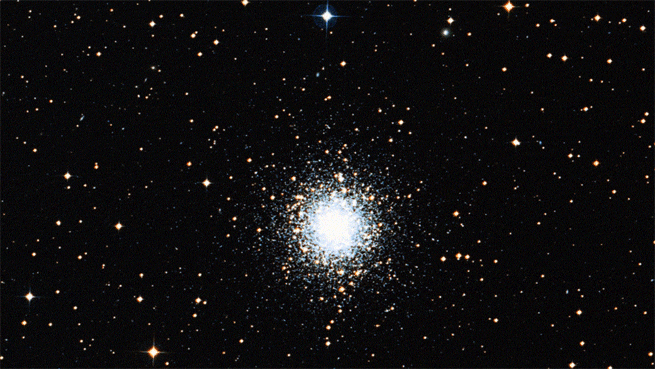
This animation zooms in to the Hubble image of globular star cluster Messier 79 (M79).
It’s beginning to look a lot like the holiday season in this NASA Hubble Space Telescope image of a blizzard of stars, which resembles a swirling snowstorm in a snow globe.
The stars are residents of the globular star cluster Messier 79, or M79, located 41,000 light-years from Earth, in the constellation Lepus. The cluster is also known as NGC 1904.
Globular clusters are gravitationally bound groupings of as many as 1 million stars. M79 contains about 150,000 stars packed into an area measuring only 118 light-years across. These giant “star-globes” contain some of the oldest stars in our galaxy, estimated to be 11.7 billion years old.
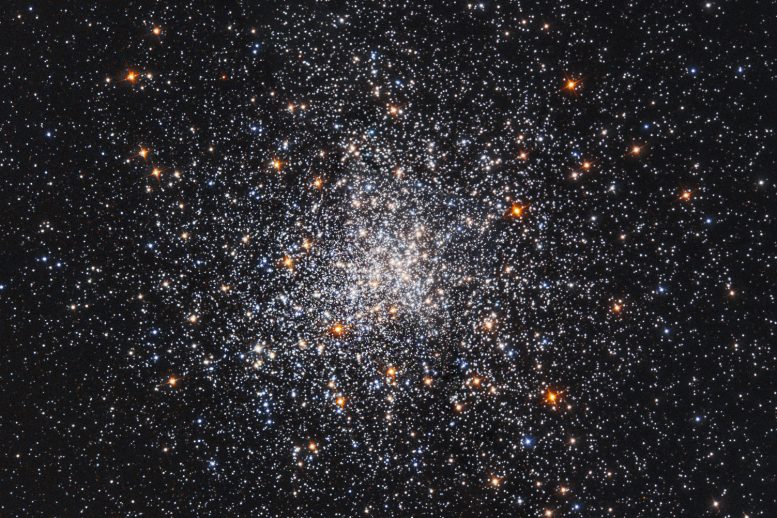
The stars in the globular star cluster Messier 79 look a lot like a blizzard in a snow globe in this NASA Hubble Space Telescope image. Credit: NASA and ESA, Acknowledgment: S. Djorgovski (Caltech) and F. Ferraro (University of Bologna)
Most globular clusters are grouped around the central hub of our pinwheel-shaped galaxy. However, M79’s home is nearly on the opposite side of the sky from the direction of the galactic center. One idea for the cluster’s unusual location is that its neighborhood may contain a higher-than-average density of stars, which fueled its formation. Another possibility is that M79 may have formed in an unusual dwarf galaxy that is merging with the Milky Way.
This video starts with a wide-field view of the sky covering the constellations of Orion, the hunter, and Lepus, the hare. The view zooms down to the relatively tiny field of the Hubble image of globular star cluster Messier 79 (M79). The sequence then dissolves to a visualization of a rotating star cluster that provides three-dimensional perspective. The simulated star cluster is modeled to reflect the number, color, and distribution of stars in M79, but not its exact structure. Finally, the scene pulls back to reveal a special holiday greeting. Credit: NASA, ESA, and F. Summers, J. DePasquale, D. Player, Z. Levay and G. Bacon (STScI)
In the Hubble image, Sun-like stars appear yellow. The reddish stars are bright giants that represent the final stages of a star’s life. Most of the blue stars sprinkled throughout the cluster are aging “helium-burning” stars. These bright blue stars have exhausted their hydrogen fuel and are now fusing helium in their cores.
A scattering of fainter blue stars are “blue stragglers.” These unusual stars glow in blue light, mimicking the appearance of hot, young stars. Blue stragglers form either by the merger of stars in a binary system or by the collision of two unrelated stars in M79’s crowded core.
This special holiday snow globe greeting is a visualization of a rotating star cluster that provides three-dimensional perspective of globular cluster Messier 79 (M79). The simulated star cluster is modeled to reflect the number, color, and distribution of stars in a Hubble Space Telescope view of M79, but not its exact structure. Credit: NASA, ESA, and F. Summers, J. DePasquale, D. Player, Z. Levay and G. Bacon (STScI)
The star cluster was discovered by Pierre Méchain in 1780. Méchain reported the finding to Charles Messier, who included it in his catalog of non-cometary objects. About four years later, using a larger telescope than Messier’s, William Herschel resolved the stars in M79, and described it as a “globular star cluster.”
The image is a combination of observations taken in 1995 and 1997 by Hubble’s Wide Field Planetary Camera 2. The red, green, and blue colors used to compose the image represent a natural view of the cluster.


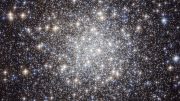
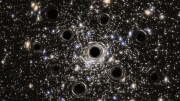
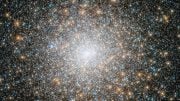
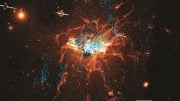
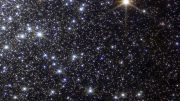
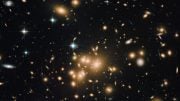
Be the first to comment on "Hubble Views Globular Star Cluster Messier 79"